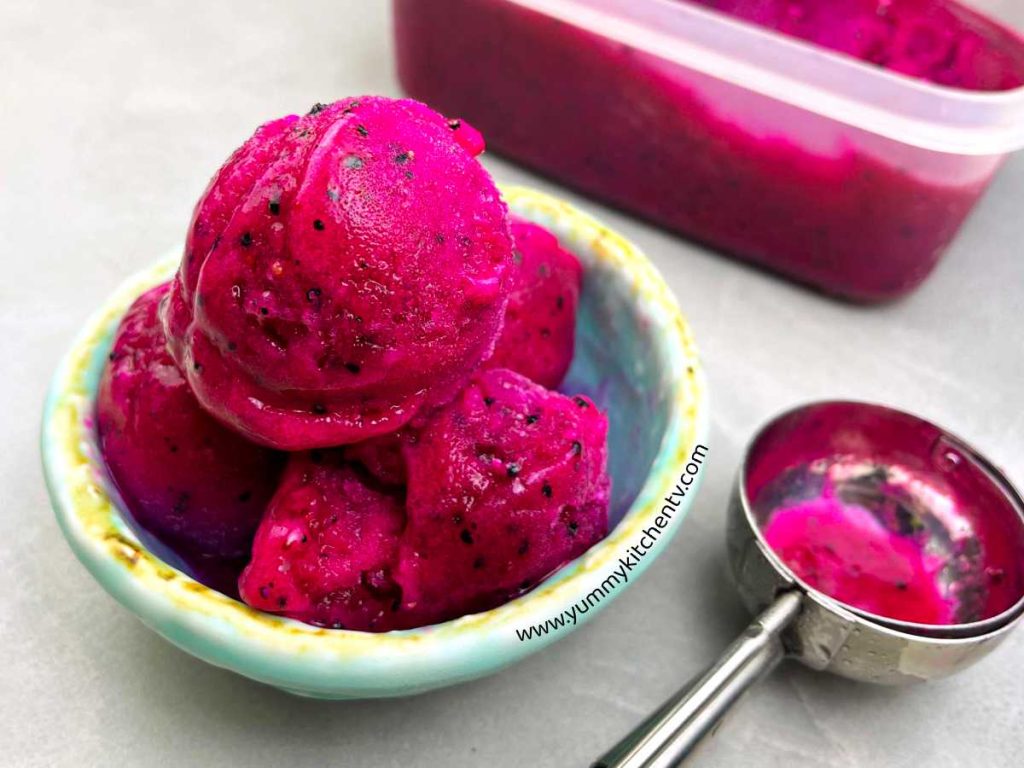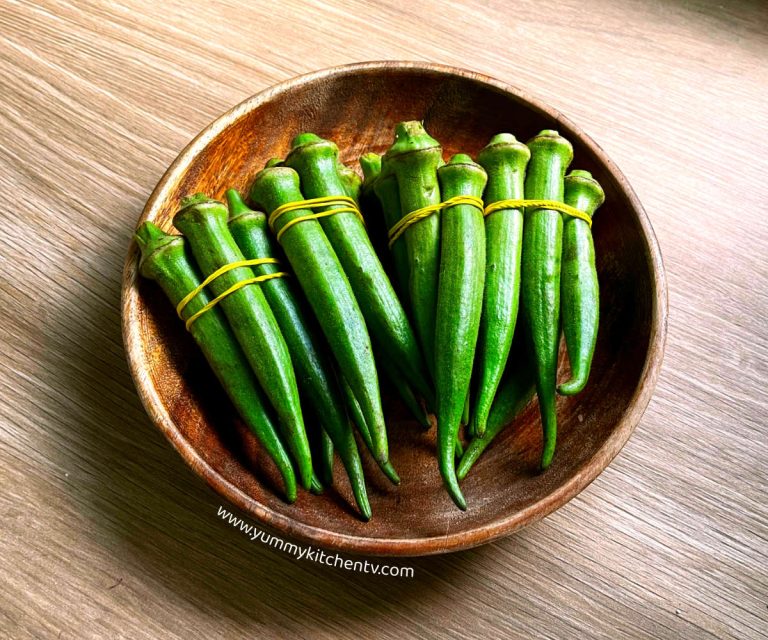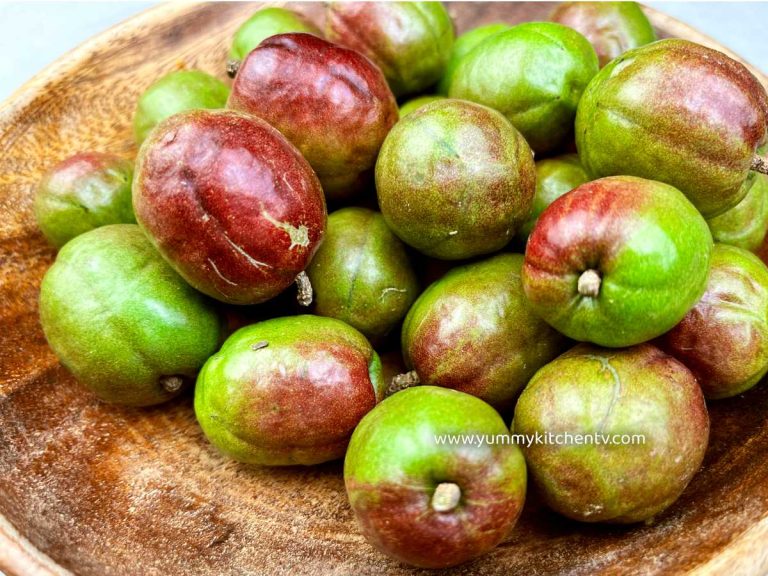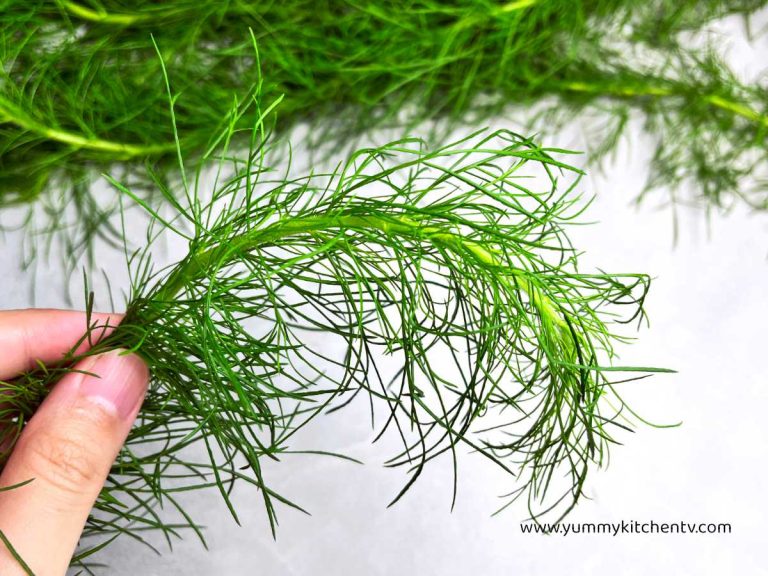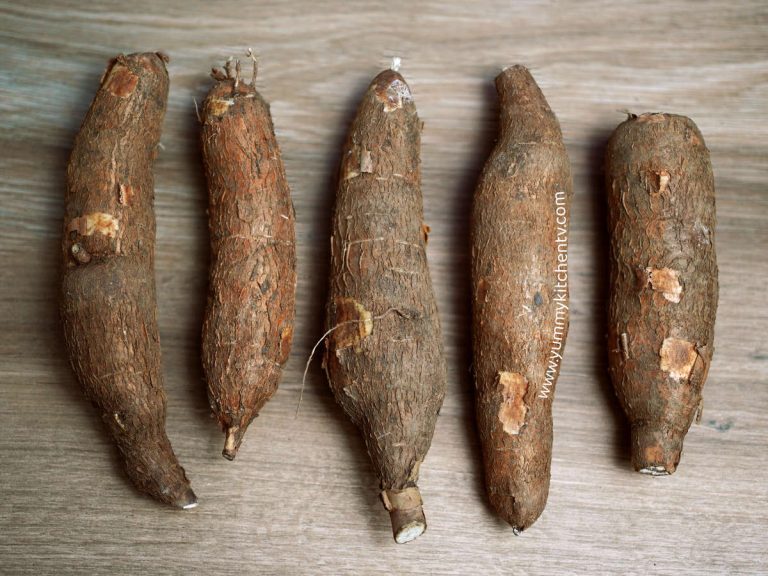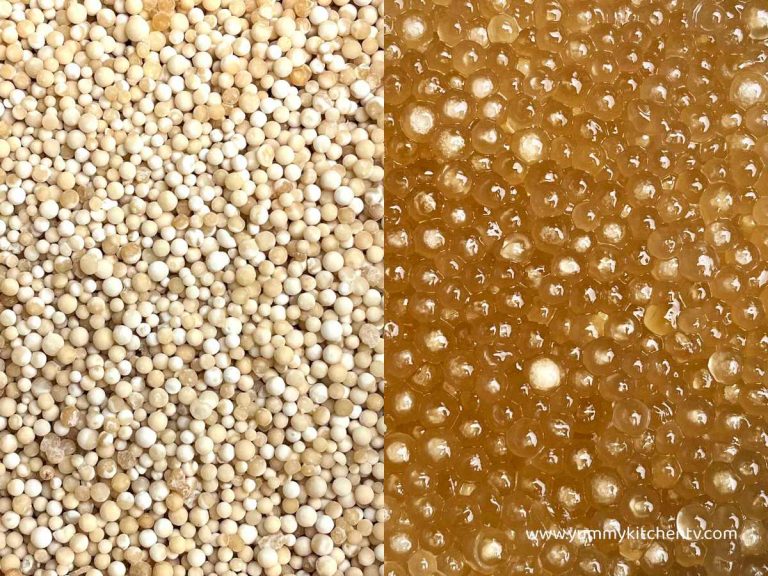Dragon Fruit
The Dragon fruit plant or ‘strawberry pear’ or ‘pitahaya’, is an exotic looking fruit that has a bright pink outer exterior that look like large flame shaped scales with yellow-green tips. A tropical fruit with deep fuchsia, yellow, or bright white flesh freckled with small seeds. The taste is described as a combination of a pear and kiwi, having a subtle sweet taste and kiwi like texture. A fat-free low calorie fibrous fruit under the cacti family, is native to Central America and Southern Mexico and other tropical areas around the world. What makes this vibrant colored fruit so intriguing? Is dragon fruit really good for you? Check out the article to find out how beneficial this gorgeous fruit really is.
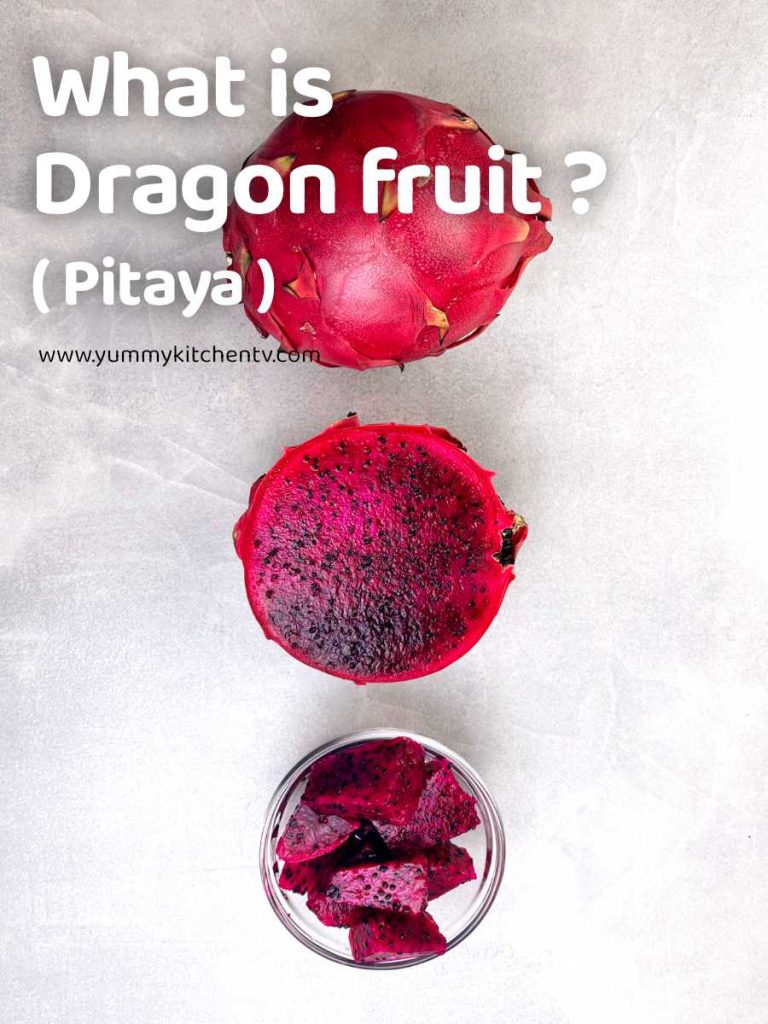
A short Introduction
Pitaya vs Dragon fruit? These are one of the same, the Dragon fruit has different names such as ‘Pitahaya’, English names like ‘Belle of the Night’, ‘Strawberry Pear’, ‘Cinderella plant’, in Mandarin ‘Long guo’, ‘pitahaya’ in Mexican, ‘thanh long’ in Vietnamese, ‘buah mata naga or buah naga’ in Malay and Indonesian, with the scientific name ‘Hylocereus undatus’ from the Greek words ‘hyle’ and ‘cereus’ which means ‘woody’ and ‘waxen’ respectively. A plant related to Cacti, specifically the ‘Orchid Cacti’ that are known for their magnificent looking flowers, having 20 different species. These have a pink outer shell, with medium sized wavy looking leathery scales that are gradient colored from pink to light green tips, resembling a thinner version of the skin of an artichoke. The shape and color of the fruit resembles a dragon or what would look like a dragon’s egg in fictional stories, thus the name it was given.
Where does dragon fruit grow? A native fruit to South and Central America, but can be abundantly found in many Asian countries. As these were introduced to Vietnam from France a hundred years ago, with Vietnam still being the leading exporter giving 55% of the fruit production sold all over the world. Many other Asian countries like the Philippines, Southern China, Hawaii, Northern Australia, Thailand, and Israel have been growing this fruit quite well. They come in different varieties; the white, pink, yellow, red or purple colored flesh, each having tiny black seeds that look like kiwi, which the flesh also has a similar consistency of. The Dragon fruit tastes like a mix of a kiwi and pear; some even taste a tad bit of citrus. These are very mild in flavor and sweetness, and are more like kiwi in texture. Eaten raw but are best when served chilled, made into drinks like juice or smoothies, cold desserts such as ice cream or sorbet, as a flavoring syrup, candy, or added into other pastries.
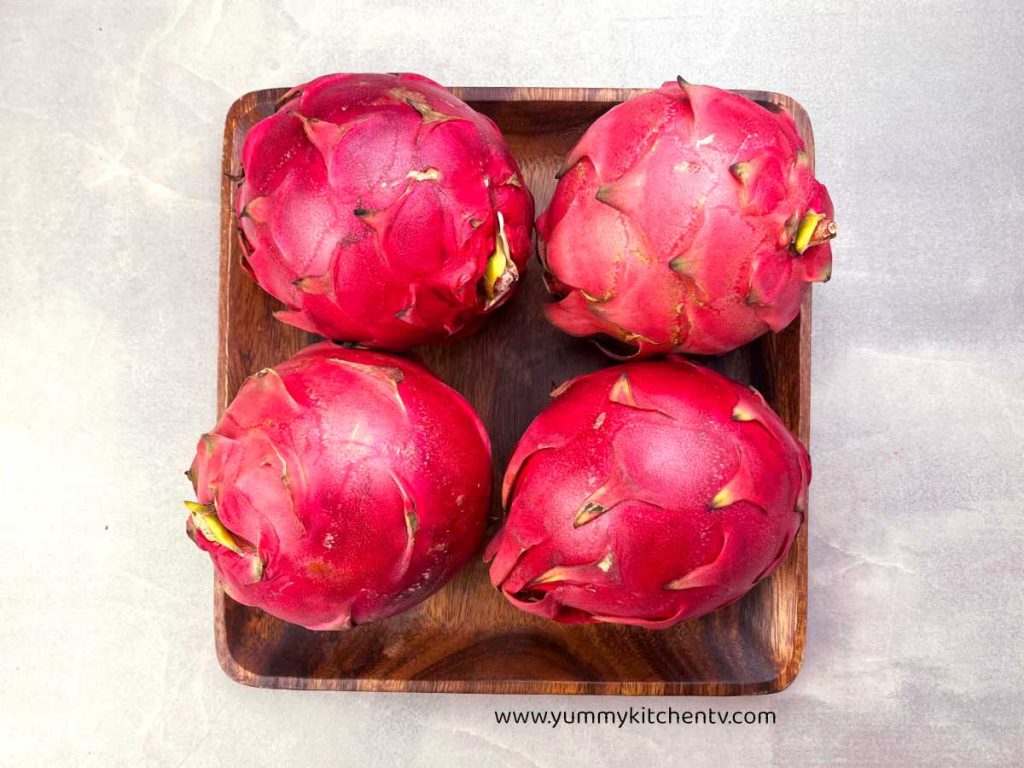
Yellow dragon fruit vs Pink
These are both similar in taste but some people do find the Yellow colored ones juicer and a tad bit sweeter. While the Pink ones are a bit more intense in flavor and have a thinner shell. There are also other colors like the purple which is on par in almost every way with the red/pink.
Dragon Fruit Benefits
How is dragon fruit healthy? Dragon fruit nutrition facts include (for 6 oz a serving) 2 grams of protein, 5 grams of fiber, 22 grams of carbohydrates, 13 grams of sugar, milligrams of Vitamin A, C, magnesium, and iron. Which makes the dragon fruit calories count to just 102. It makes for a great snack or even breakfast option for those who like a sweet fiber boost that’s great for the gut. Here some benefits of white, yellow, pink, or red dragon fruit:
- Is Dragon Fruit good for weight loss? Because of its fiber content and being fat-free it keeps you feeling full and ceases constant hunger pangs.
- Has prebiotics that feed healthy bacteria to your gut. Balances the intestines, as well as kill viruses and harmful bacteria.
- A healthy gut keeps the body’s immunity strong. Antioxidants plus Vitamin C also helps with keeping you active.
- Protects the cells by having a good amount of antioxidants that fight against free radicals. Antioxidants are also important to the body to fight signs of aging on both the inside and out.
- Lowers blood sugar, it makes insulin by replacing damaged cells that are needed to break down sugar.
* Dragon fruit side effects: While safe to eat, some do have rare allergic reactions especially for pregnant and nursing women. They might cause vomiting, swelling of the tongue, or hives. Also, do not worry if your pee does turn pink-colored this will revert back to normal once the fruit is out of your system.
* Can dogs or cats eat dragon fruit? Yes, they can enjoy these as a nutrient dense snack or treat.
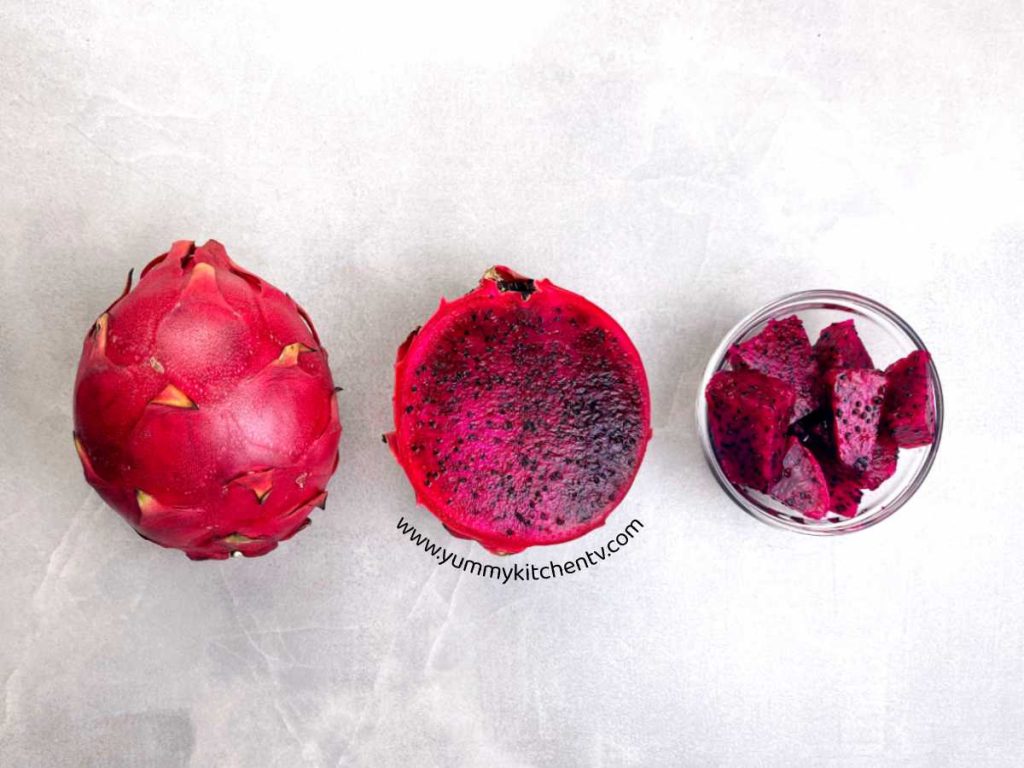
How to cut a dragon fruit
- Optional, wash these in running water and pat dry with a kitchen towel.
- Slice it in half lengthwise with a knife.
- Use a spoon (best if you use a bigger spoon) to scrape out the flesh in each halves.
- Slice or chop it into desired pieces.
- Throw out the skin/shell or use it as a serving bowl for later.
* How to eat Dragon Fruit: Dragon fruit smoothie recipes are abundant on the internet, as well as thick delicious smoothie bowls, acai bowls, sweet cream salads, as ice pops, added in pancakes for a burst of color, or just a simple platter of cubed fruit.
Can it be found in the Philippines?
Introduced by the Spaniards around the 1900’s, and was seen to have potential internationally especially since it grows best in warmer lands, (places these are in production in the Philippines) like the Davao, Cavite, Ilocos, and Bukidnon region. While it is still a small growing industry producing 250 to 2,00 tons between the years of 2012 to 2021. The Philippines have joined the competition by exporting these bright colored fruits in international markets. Produced between May to October or till December with the help of artificial lighting. Many government and universities are partnering to help improve the cultivation to yield more but still have great quality.
